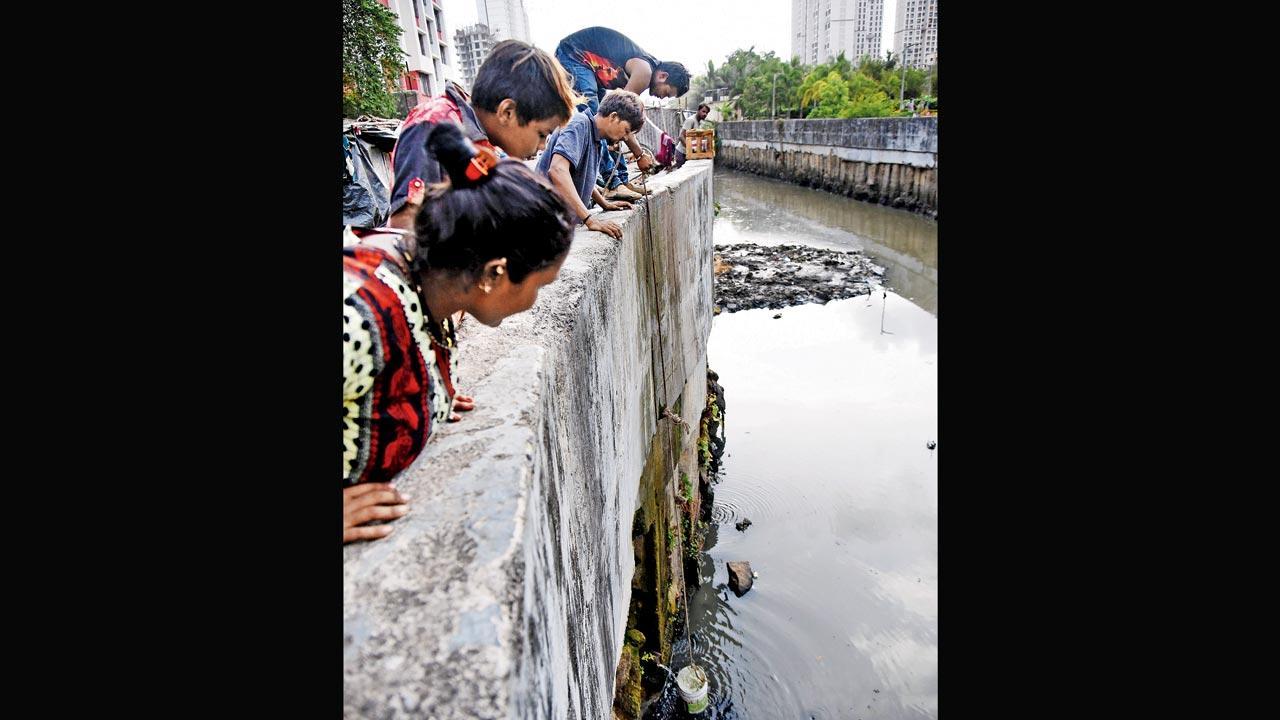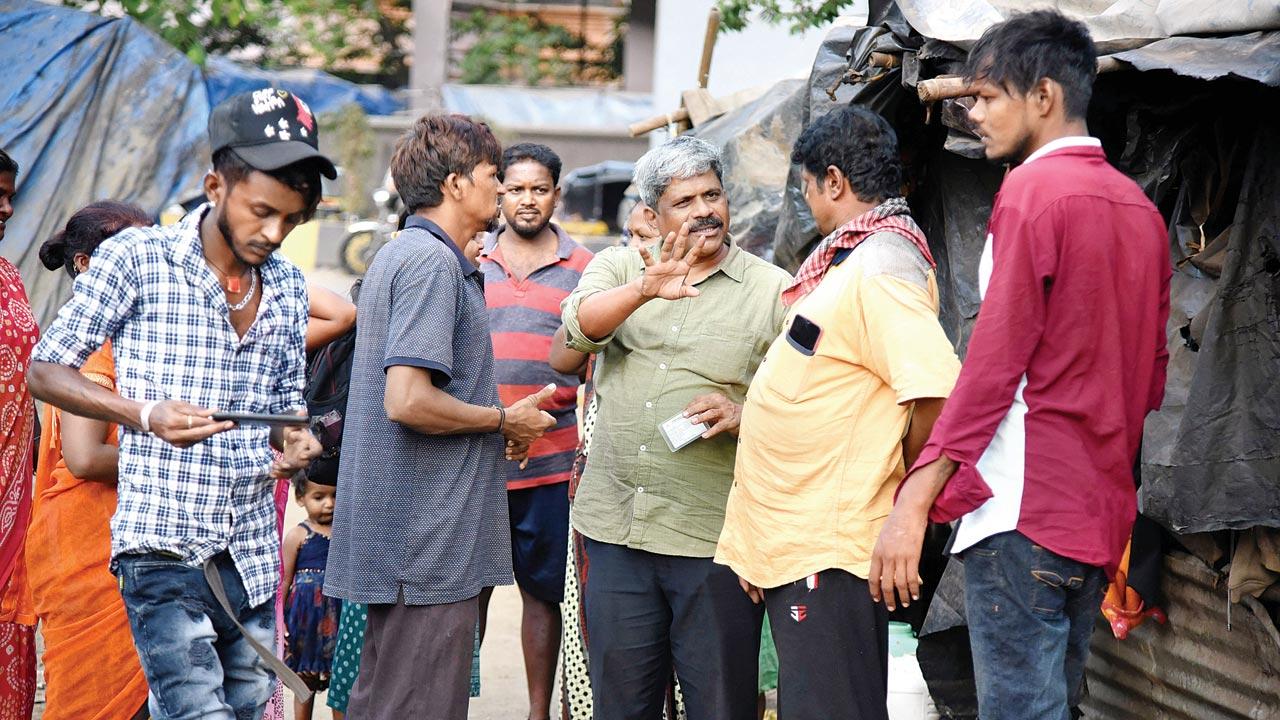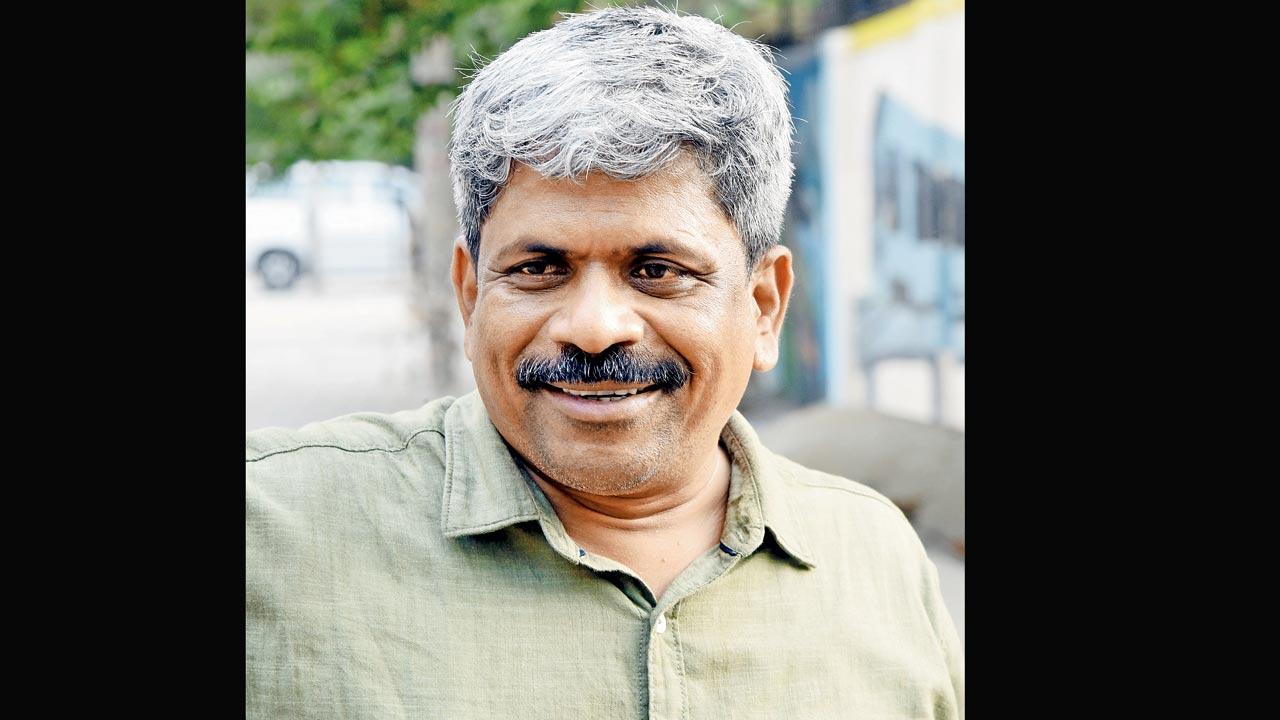Pani Haq Samiti’s convenor Sitaram Shelar weighs in on the recently announced Water For All policy and highlights how it still leaves 10 lakh homeless people and slumdwellers without a connection

The slumdwellers near Chikuwadi and Mahavir Nagar in Kandivli West are largely migrant labourers from Solapur, who came to Mumbai about 12 years ago. Most of them are sanitation workers who work as contractors with BMC.
For Sitaram Shelar it began with a campaign to stop privatisation of water. This stirred a desire to ensure equitable distribution of water, which led him to start Pani Haq Samiti in 2010. Over the last decade or so, he has been at the forefront of the fight for access to safe water for everyone, including those living in slums and on pavements. In 2016, the Brihanmumbai Municipal Corporation (BMC) sanctioned the Water For All policy. Last Saturday, Chief Minister Uddhav Thackeray announced a revised policy, which will give every Mumbaikar access to potable water through formal sources. Sunday mid-day reached out to Shelar to weigh in on the policy and judge whether it is truly inclusive.
Edited excerpts from the interview.
How do you perceive the revised Water For All policy?
It is a good move. We estimate that about 30 to 35 lakh people will benefit from it, including the 10 lakh slumdwellers and the residents of 55,000 buildings. While some of them were given a standpost connection on humanitarian grounds, many had to resort to buying water illegally from tankers.
While it is assumed that those living in chawls use water illegally, it is often that those living in residential and commercial complexes who in fact do so. The BMC will also see a 10 per cent drop in non-revenue water [water lost before it reaches the customer] from the earlier 30 per cent. Hence, revenue will increase. We have also suggested a scheme encouraging those with illegal water connections to step forward and get it regularised, without any penalty.
The policy also empowers the water department to make decisions independently. Earlier, one would need an NOC [No Objection Certificate] from the drainage department. Since 1996, no slum in the city has been declared authorised, but for those under the Slum Rehabilitation Authority. BMC can’t undertake drainage work until a slum has been declared authorised. The new policy says that if people can arrange a drainage facility, then they will be given legal connections on humanitarian grounds.
 Pani Haq Samiti’s convenor Sitaram Shelar has been fighting for the right to water for all since 2010. Pics/Sameer Markande
Pani Haq Samiti’s convenor Sitaram Shelar has been fighting for the right to water for all since 2010. Pics/Sameer Markande
The onus for drainage facility is on applicants. How much would it cost and is this fair to them?
Right now, they are paying Rs700 for 1,000 litres. But if they get 1,000 litres of water for Rs 5, they would willingly bear the cost of Rs 5,000 for a drainage facility. Licensed plumbers charge Rs 1,00,000 to carve drainage systems; these families willingly bear the expense of Rs 20,000 per family because they want to have a dedicated connection.
Is there really a need for a licensed plumber as mentioned in the policy?
No, a junior BMC engineer and a regular plumber is enough. A licensed plumber is necessary for buildings with multiple floors because there is a need to check water pressure, etc. But the slums are flat structures. In fact, as per the Municipal Act and water bylaws, licensed plumbers are needed only for buildings.
 Sitaram Shelar
Sitaram Shelar
Do you think all the slums you have been fighting for will now receive legal water connections?
The policy needs some rectifications—it excludes about 10 lakh people who live on the pavements, as well as people residing in shanties on elevated or hillside areas. So the entire stretch of Vikhroli, Bhandup, and Mulund still won’t get formal water connections.
As per a BMC survey, about 25,000 families live on the footpaths in South Bombay. We feel that the western suburbs have a larger population of homeless people. Our estimate says that about four lakh people live on the pavement.
Besides, the new policy says nothing about tribals, including those living in Aarey Colony. Plus, there are about 25,000 families, who live in forest area and have paid to the forest department to be rehabilitated, but have no homes yet. People settled in the salt pans near Bhandup also won’t get water due to a court order; this is not in the hands of the BMC.
What’s the immediate solution?
Our demand is that pyaavs [a community water stand], which existed before the BMC stopped them, should be reopened. We have been demanding this for 10 years. This should be done immediately on humanitarian grounds. These could also cater to animals and birds.
You had a list of concerns before the policy was announced, including NOC certification, differential rates, etc. Have these issues been addressed?
Currently, if you want a water connection, 23 departments such as Minerals, Drainage, SWD [storm water drainage] have to green light it. That’s the SOP [Standard Operating Procedure]. We have asked them to remove this burden from the applicant’s shoulder and put the onus on the BMC. An applicant should get a water connection within 15 days. The new policy also has an NOC clause saying applicants have to get an affidavit declaring they will arrange the drainage facility at their expense, failing which, action can be taken against them.
Our concern regarding the differential rates has been addressed by the CM, but it has not been given in writing yet.
You had argued that the allotment of a single connection per 15 families is irrational and should be should be rectified…
This argument will continue. We think one connection should be allotted per family or five families at most. A common connection leads to many problems—imagine having a common connection per floor in a residential complex. Besides, the slums get water for a limited time. Why would you do that to people who rush to stock up water before heading to their jobs as domestic help or drivers? A building in Worli has an infinity pool on every floor. So, on one hand, you can arrange for purified water for an infinity pool, but you want others to fight for it every day.
The BMC talks about 150 litres of water per capita, per day. Considering this, five families with five members each should have access to 3,500 litres of water. Can that one connection really do that? It is not possible to get this much water in two hours, even if you increase the pressure. This is the chaos we are anticipating for five families. Now imagine this chaos when there is only one connection for 15 families. The earlier policy spoke about one connection for a maximum of 15 and minimum of five families. The new one has made 15 families the minimum criteria. There is a clause that if five families want to get a dedicated connection, they have to get permission from the Municipal Commissioner. So that’s one more permission to chase.
What would truly make a just water policy for all?
The United Nation has written a paper that says water should be accessible [i.e. it should reach you and you don’t have to go fetch it] affordable, potable; and the onus for this should be on the municipal, state or central authorities.
When the state takes this onus, it will truly be a ‘Water For All’ policy.
 Subscribe today by clicking the link and stay updated with the latest news!" Click here!
Subscribe today by clicking the link and stay updated with the latest news!" Click here!










